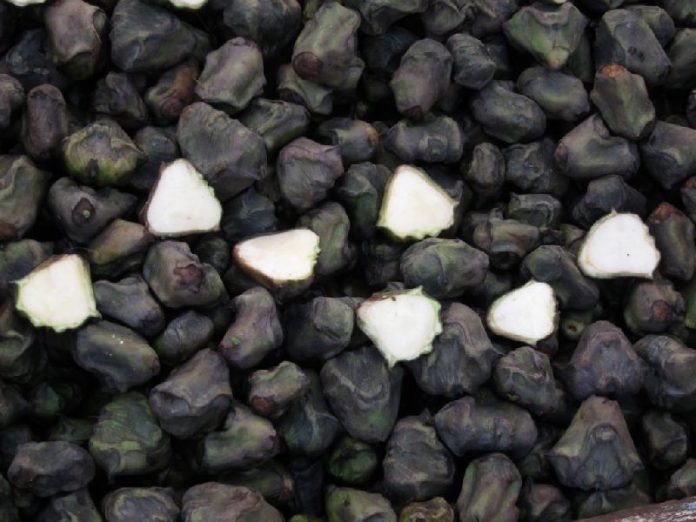An Asian male found to be allergic to Water Caltrop (Singoda) flour at the age of 57 years!
A 57-year-old Asian male patient was brought to the regional Allergy center in Heartlands Hospital, Birmingham, UK, with complaints of generalized rash, swelling, breathlessness, and loss of consciousness, 20 minutes after consuming a meal containing Water Caltrop (Water chestnut, singhare, or Singoda) flour, almond, and cashew. The patient had been fasting before he consumed that meal.
The paramedics had given the patient 0.5 mg adrenaline 1:1000 intramuscularly, and he was rushed to the nearby emergency department.
In the ER, he was started on intravenous chlorpheniramine and hydrocortisone. Serological investigation within the first 2 hours of the presentation showed an acute total mast cell tryptase of 18.1 ug/L (normal range: 2.00 – 14.00 ug/L). His baseline tryptase was 3.5 ug/L. Complete resolution of the symptoms was observed after the treatment; hence the patient was discharged with an adrenaline auto-injector.
Within a few weeks, the patient was again brought to the emergency department 60 minutes after accidentally consuming a meal containing Water Caltrop (Singoda) flour. Within an hour of ingestion, the patient had started feeling uncomfortable, followed by a generalized urticarial rash. He used the adrenaline auto-injector that he was prescribed during the past event and was then brought to the ER.
In the ER, he was given antihistamines and was kept under observation. He was discharged a few hours later as the patient was stable, and there was no cardio-respiratory compromise.
Although his past medical history revealed that he had hypertension, diabetes mellitus type 2, and one previous episode of thromboembolism, but the history did not reveal any co-factor that could have been connected to both reactions. There was no family or personal history of previous spontaneous urticaria/angioedema or idiopathic anaphylaxis.
His usual medications included: amlodipine, simvastatin, and warfarin. He had no known drug allergies.
Skin prick test (SPT) to normal saline (negative control) was negative (0 mm) and positive (5 mm wheal) to histamine. A 6 mm wheal was produced after a ‘prick to prick’ skin test to water caltrop seed. A negative SPT, ssIgE, and an open oral challenge test to cashew nuts excluded cashew nut allergy.
The patient was diagnosed with an IgE mediated hypersensitivity reaction to Water caltrop. He was advised to avoid water caltrop in all forms strictly.
Although there is limited data on cross-reactivity between water caltrop and other plant foods and pollens, it is imperative to be cautious; therefore, the patient was educated and counseled regarding the importance and use of an emergency treatment kit consisting of chlorpheniramine and adrenaline auto-injector device, which was to be carried with him at all times.
Source: Mohamed OE, Osborne T, Heslegrave J, Krishna MT (2019) Anaphylaxis to Water Caltrop (Singoda Flour): A Case Report. Int J Aller Medications 5:040. doi.org/10.23937/2572-3308.1510040




